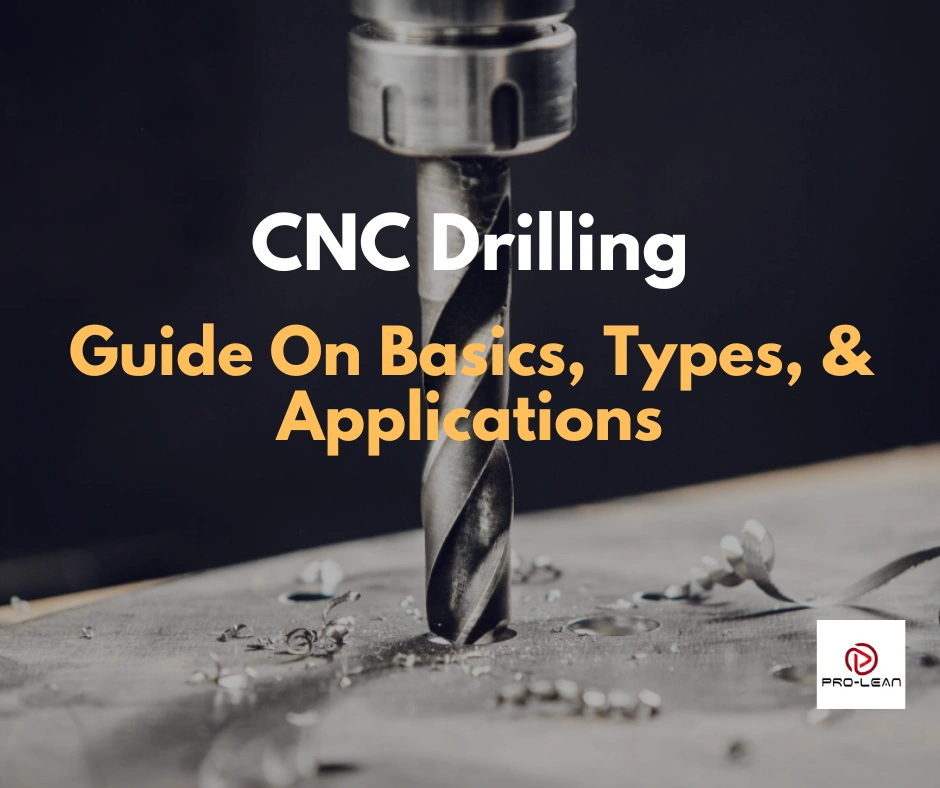
Parts assembly is common in many industries. The success of this process depends on accurate hole placement. Quality computer numerical control (CNC) drilling ensures consistent and predictable hole placement that minimizes costs.
CNC drilling is a highly-regarded process for its high accuracy and precision. Their speeds are incomparable to those of manual drilling. They also remove the human error aspect, hence they suit some critical industries.
As an advanced process, CNC drilling with ProleanTech can form accurate holes in metals and non-metals alike, earning relevance in electronics, medical, aerospace, and automotive, among many other industries.
By using this technology for parts, sellers and users can enjoy quality that is lacking in manual drilling and alternative hole manufacturing methods.
Keep reading this insightful article to learn more about the principle, benefits, and applications of CNC drilling.
What Is CNC Drilling?
CNC drilling is a hole-forming machine process that is typically applied on stationary workpieces. As the workpiece is affixed to a table, the rotating tool progressively removes material to create a hole. If there are several holes to be produced, the CNC drilling machine will form the holes one by one.
The main components of the drilling process are the drilling machine, the control software, cnc machine drilling tools, and a specified toolpath.
The process is done on the drilling machine comprising a drill head, worktable, chuck, and radial arm, among other parts. The drilling machine follows a G-code or any other relevant CNC drilling program to machine holes as designed.
The process entails creating holes on a workpiece using a rotating drill. The resulting hole is normally the same size as the drill. Once complete, the hole can accommodate a screw or any other fastener for fabrication.
CNC drilling has many advantages from enhanced fabrication efficiency to creation of highly precise holes. Since this drilling process is computer-controlled, it is very predictable in the management of cutting speed, cut depth, coolant supply, and hole positioning.
As we will discuss later, there are different CNC drilling methods and technologies, all aimed at providing the most custom CNC drilling solutions.
There is more to this process here: What is CNC drilling and how does it work?
We will now briefly look at the working principle.
The Working Principle of CNC Drilling
Like other CNC processes, the drilling process entails combining software power, mechanical systems, electrical systems, and a feedback system. Some human input is also required – programming and monitoring the process.
CNC Drilling Services entail expertly combining these aspects for accurate results.
The drilling process generally follows the following steps:
Steps For The CNC Drilling Process
Generating The Workpiece Geometry
The designer starts the process by determining the workpiece geometry. Focus will be on essentials such as hole size, hole position, and hole depth. CAD software is prominently used at this stage.
Since the CNC machine doesnt understand CAD software language, a conversion is done to a compatible format.
Setting The Drilling Cycle
A drilling cycle is important for consistent results, particularly for the machining of multiple holes. It helps create a routine the machining process will follow to the end. The specific cycle depends on the types of holes being drilled.
Selecting The Drilling Tool
The cutting tool parameters and the type of drill bit chosen are critical. Of utmost importance is the cutting tool material, which is largely determined by the material being machined. Other related factors are hole size and cutting speed.
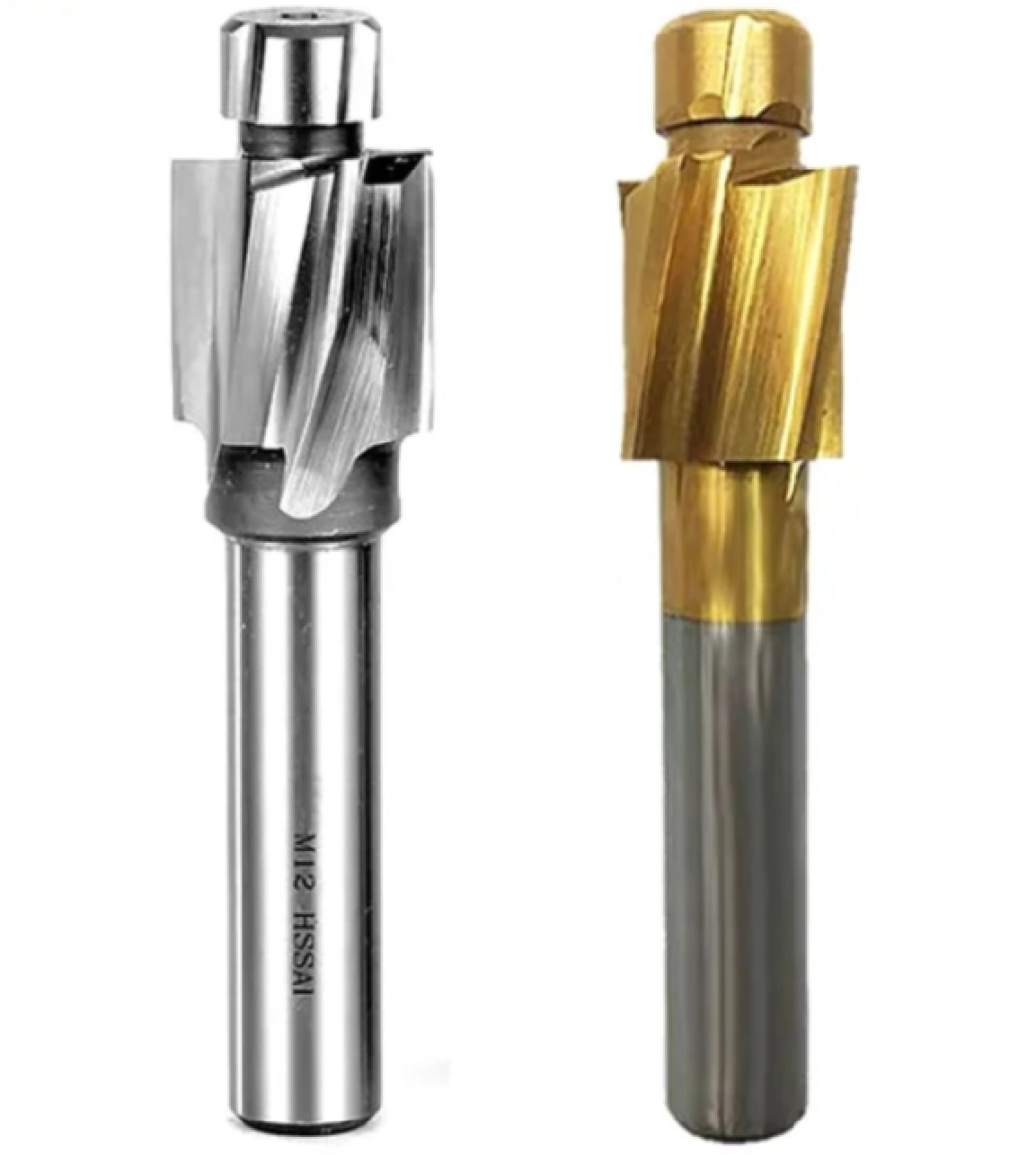
Try Prolean Now!
Explore CNC drilling tool selection and tips for more insights.
Setting Up The Rest Of The Drilling Machine
The drill bit and the workpiece are fixed to the machine spindle and worktable respectively. Strong clamps and fixtures are used on the workpiece to ensure it remains steady during the drilling process.
Drilling The Part
The cnc drilling machine follows the instructions in the CNC drilling program to machine the hole(s).
The machine is designed to operate autonomously until the process is complete. If there are any issues during the process, for instance, if the drilling bit breaks, the operator can always stop the machining process.
As this guide shows, drilling is different from boring: Differences between boring and drilling.
Difference Between CNC Drilling and CNC Lathe
Talking of differences, one of the biggest confusion among part’s users is the dfference between CNC drilling and CNC lathe operation.
The main difference is how the workpiece and the tool interact. In CNC lathe operations, the workpiece rotates as the stationary cutting tool removes material. For CNC drilling, the workpiece is stationary as the drill rotates, removes material, and creates a hole in the workpiece.
Difference Between CNC Drilling And Thread Tapping
CNC drilling may be part of a similar CNC machining process, but their functions are different. CNC drilling entails the use of a rotating cutting tool to produce a clean hole of particular parameters.
For thread tapping, the goal is to create internal threads in a hole. This is important for fasteners that may be used.
In short, CNC drilling is a substractive procedure while tapping belongs to the material forming category.
Difference Between CNC Milling And CNC Drilling
CNC drilling is the perfect technique to produce precise round holes, but CNC machining often requires more than just holes. CNC milling is the process of choice for making those complex contours and shapes on a workpiece.
Other differences are in tool movement, typical use, and complexity of the resulting features, as the table below shows.
| Property | CNC Milling | CNC Drilling |
| How it works | Machines pockets, shapes, contours | Produces round vertical holes |
| Where it is used | Surfacing, finishing | For standard and fastener holes |
| Type of tool | Face mill, side mill, etc. | Drill bit |
| Axis (axes) involved | Multiple axes (X, Y, Z, A, B, C) | Typically the Z-axis |
The Main Parts Of A CNC Drilling Machine
As already intimated earlier, the CNC drilling machine is largely similar to other CNC machines. Each of the parts highlighted below has a special function towards making the operation successful.
Quality CNC drilling machines at ProleanTech have these components optimized to guarantee excellent results everytime.
The CNC Controller
The controller is the epicenter of all CNC drilling operations. Its function is to interpret the program instructions and convey them to the respective machine components for action.

The Machine Bed
This is the place where the workpiece is fixed as it is drilled. Different sizes and forms of workpieces can be put on this flexible component.
The Servo Motors
The servo motors are the sources of the motion seen in various drilling machine components. These motors are precisely controlled by the CNC machine to deliver movements as and when required.
The Coolant System

The coolant system supplies coolant during the drilling process, a crucial safety and reliability aspect. Both the drill bit and the workpiece need cooling to manage the heat generated during drilling. The coolant also helps remove chips and debris from the machined area.
The Machine Spindle
The machine spindle holds and rotates the drill bit. It is a critical part of the system because its sturdiness and speed determine the effectiveness of the drilling process.
What Are The CNC Drilling Supported Materials?
CNC drilling is suitable for a wide range of industries, where of course, many types of materials are used. Because of varying properties, every material interacts with CNC drilling differently. If you are partnering with a reputable company such as ProleanTech, exposure to numerous material types ensures good material recommendations.
It doesn’t matter whether the material is wood, plastic, or metal; considering suitability to the CNC machining process is critical.
Some of the most CNC drilled materials are:
- Aluminum
- Brass
- Copper
- Composites
Different Types Of Drill Bits
Once the material to be CNC drilled has been identified, it’s time now to choose the appropriate tool, which is a drill bit. This choice is made carefully because it affects the accuracy and quality of the drilled hole.
The most common option is the twist drill, which is ideal for both metals and non-metals. For the hard materials where high-speed drilling is necessary, carbide drills are more preferable.
Sometimes a project requires different holes to be machined at one go. This is where the step drills come in.
As you can see, each type of drill bit has unique characteristics and capabilities, so it’s always advisable to use the right one.
Different Types Of CNC Drilling Machines
Given the different hole requirements based on projects, there are different CNC drilling machines. They include gang drilling machine, micro-drill press, horizontal CNC drilling machine, and vertical CNC drilling machine.
Let us discuss these machines in a little more detail.
Gang Drilling Machine
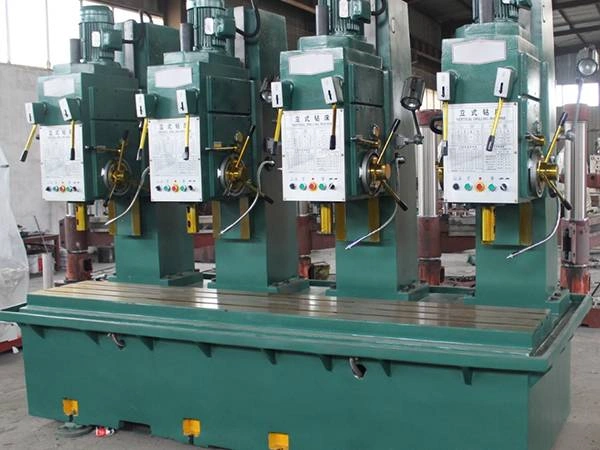
The gang CNC drilling machine features several workheads instead of the standard single one. This capability to hold and use several spindles makes it possible to drill several holes at once. It is the perfect setup for large volumes of complex CNC drilling jobs.
Micro-drill Press
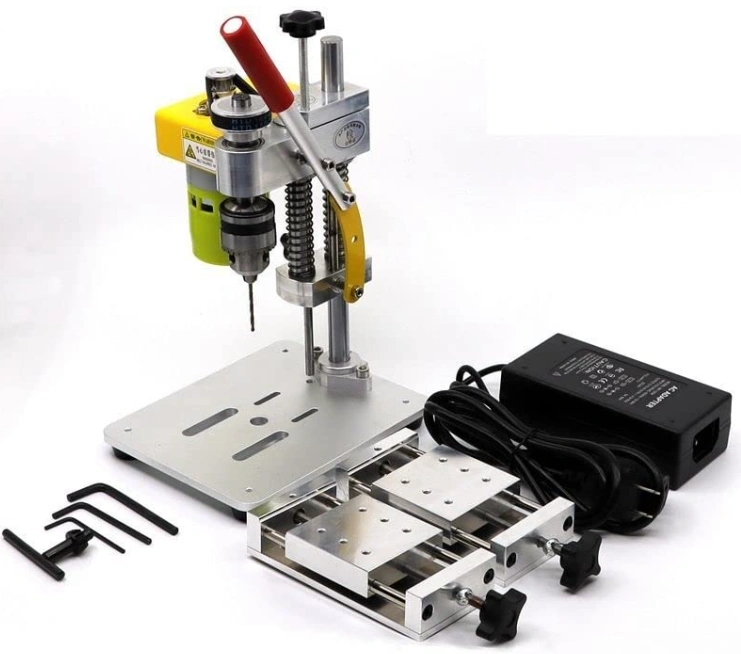
The micro-drill press has a characteristic small chuck. Manufacturers opt for this CNC drilling machine when the priority is highly accurate holes. Macroscopic parts are best produced using this machine.
Horizontal CNC Drilling Machine
The horizontal CNC drilling machine generates horizontal holes in the workpiece.
Vertical CNC Drilling Machine
This is a general categorization of CNC drilling machines that drill holes vertically. It is perfect for machining heavy and large workpieces.
CNC Deep Hole Drilling Machine
Manufacturers use the CNC deep hole drilling machine in projects requiring deep holes. A deep hole has a depth-to-diameter ratio of more than 10:1. Deep holes are common in automotive and aerospace industries, so you can expect to find these fascinating machines in such applications.
CNC Turret Drilling Machine
A CNC turret drilling machine is effective when the aim of the machinist is to position and change the cnc machine drilling tools swiftly. This type comes with several work heads.
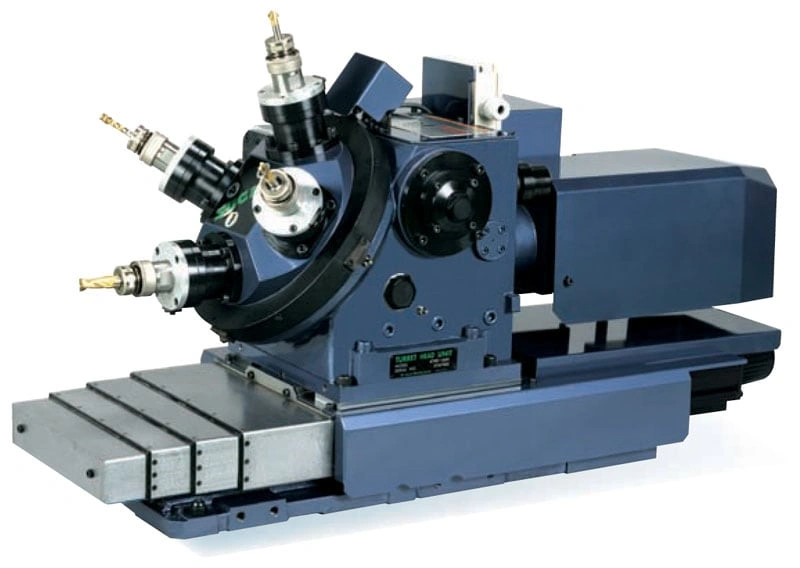
The Advantages Of The CNC Drilling Technique
The CNC drilling operation is used widely for its many advantages. You could understand more about these benefits by partnering with ProleanTech, who will also help with Understanding CNC Drilling Costs: A Step-by-Step Guide.
Here is an overview of some of the advantages of the technique:
It Is A Straightforward And Safe Process
Conventional drilling may sound simple, but it is CNC drilling that is easier to use. Provided the programming knowledge and all the basic expertise to run the machine is available, getting holes drilled cannot be easier. The modern machines are equipped with advanced safety features that ensure user safety.
The Technique Is Versatile
The versatility of CNC machining is rarely contested. First, this type of drilling accommodates a variety of materials including plastic, metal, and wood.
Second, it can be fixed with multiple drill bits to machine holes of different parameters. Add milling to the mix and you have a CNC drilling machine capable of producing countless types of parts.
It Is An Accurate Drilling Method
A CNC drill is the best bet for accurate holes that meet tight tolerances. This is important for various applications where aesthetics, safety, and top performance are critical requirements – automotive components, medical devices, aerospace parts, etc.
More accuracy may be achieved through electrical discharge machining (EDM), which is an alternative drilling technique for precise holes. This guide gives more information: What is hole drilling EDM and how it works.
Different CNC Drilling Techniques To Consider
There are many types of drilling operations doable on the CNC machine. The most common ones include general CNC drilling, spot drilling, counterboring, countersinking, and tapping.
Spot drilling
Alt text: A closeup of a spot drilling operation showing two ready holes and one being drilled on a metal plate
The table below summarizes their differences in operating principles:
| Drilling operation | Operating principle/function |
| CNC drilling | Uses a rotating drill bit to create cylindrical holes |
| Spot drilling | It is the precursor to the CNC drilling operation. Its function is to create a ‘spot’ on the workpiece |
| Counterboring | It creates a hole of varying diameters, the larger one being at the top. A counterbore hole is ideal for fasteners. |
| Countersinking | It works similar to counterboring, but the resulting top hole is conical. The hole accommodates screw heads. |
| Tapping | This is the formation of internal screws in an already-drilled hole. |
Try Prolean Now!
Examples Of CNC Drilling Applications In The Industry
Many industries need precision, safety, and functionality, and all these elements are supported by CNC drilling solutions. We are talking about automotive, electronics, medical, tool/die making, and many others.
We capture some of these applications in the summarized table below.
|
Industry |
Area Of CNC Drilling Application |
|
Computer Parts |
|
|
Sheet Metalworking |
|
|
Woodworking |
|
|
Plastic Manufacturing |
|
|
Marine Industry |
|
|
Automotive |
|
|
Aerospace |
|
|
Medical |
|
|
Oil & Gas |
|
|
Defense |
|
Get your quote now for world-class CNC machining services in these and other areas.
Wrapping Up
There is no doubt about the widespread adoption of CNC drilling and related machining technologies. Parts produced through this method are common in medical, general industry, aerospace, automotive, and many other fields. However, not all users or dealers understand the details and full capabilities of the solution.
This brief guide about cnc drilling machines and related operations adds to the pool of knowledge. It gives a foundation for identifying superior CNC drilling services.
ProleanTech is a renowned CNC machining services provider with vast experience in China and overseas. Contact us today for CNC drilling services from the best today.
FAQs
Can A CNC Drill Holes?
Yes, a CNC can drill holes accurately and smoothly for any application.
What Is The Difference Between CNC Drilling And Thread Tapping?
The difference between CNC drilling and thread tapping is that drilling creates smooth holes while tapping forms internal threads in holes.
What Is The Difference Between CNC Drilling And CNC Milling?
The difference is that CNC drilling is specifically for creating holes while CNC milling generates limitless features and shapes on workpieces.
What Is The Difference Between CNC Drilling And A CNC Lathe?
The difference between CNC drilling and CNC lathe operation is fundamental. While the CNC drill creates holes in stationary workpieces, the CNC lathe has the workpiece rotating as a cutting tool removes material.
What Is The Maximum Hole Depth Achievable With CNC Drilling?
In most cases, the depth of the hole is limited to 10 times diameter, although there are special circumstances where the CNC drill can go deeper.
What are the two most common types of drills used on CNC turning centers?
CNC turning centers usually use spade drills and twist drills.
Can you use a regular drill bit in a CNC?
Yes, a regular drill bit can be used in a CNC machine, but the ideal for optimal performance is a dedicated CNC drill bit.
What Are The Three Types Of Drilling Machines?
Three examples of CNC drilling machines are horizontal drilling machine, vertical drilling machine, and gang drilling machine.

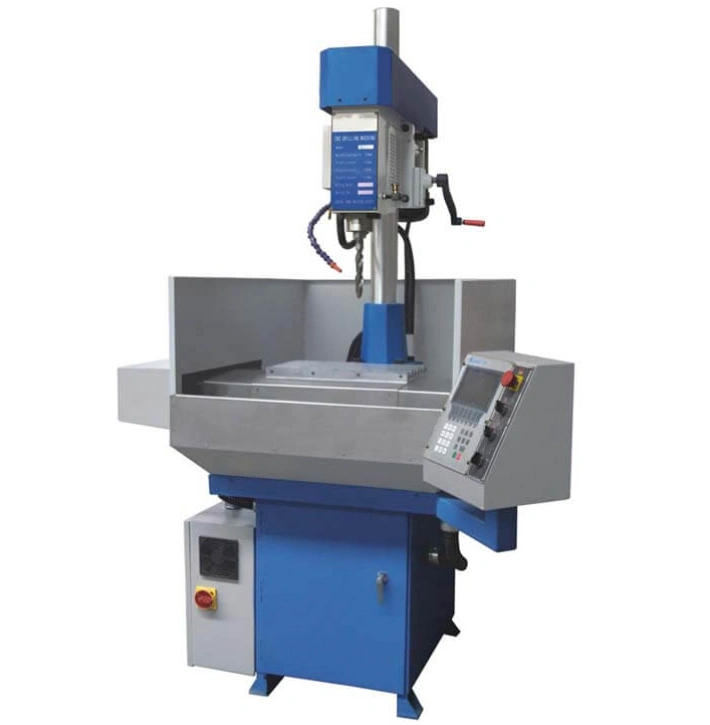
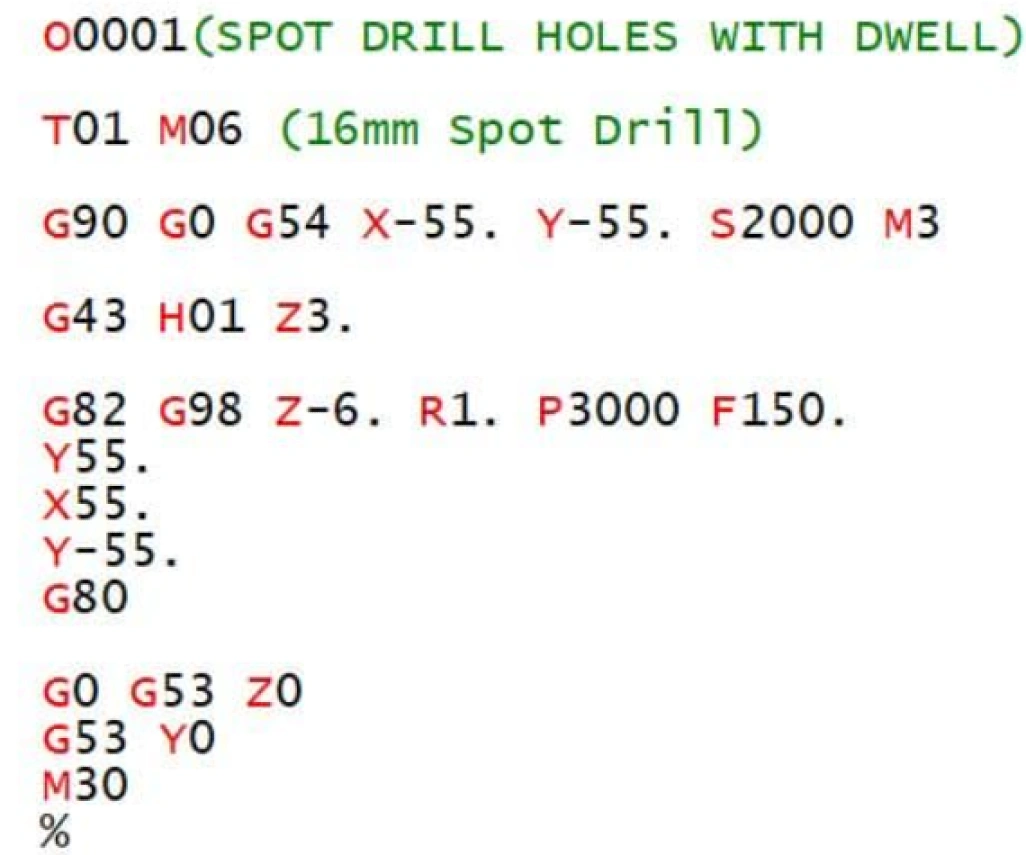
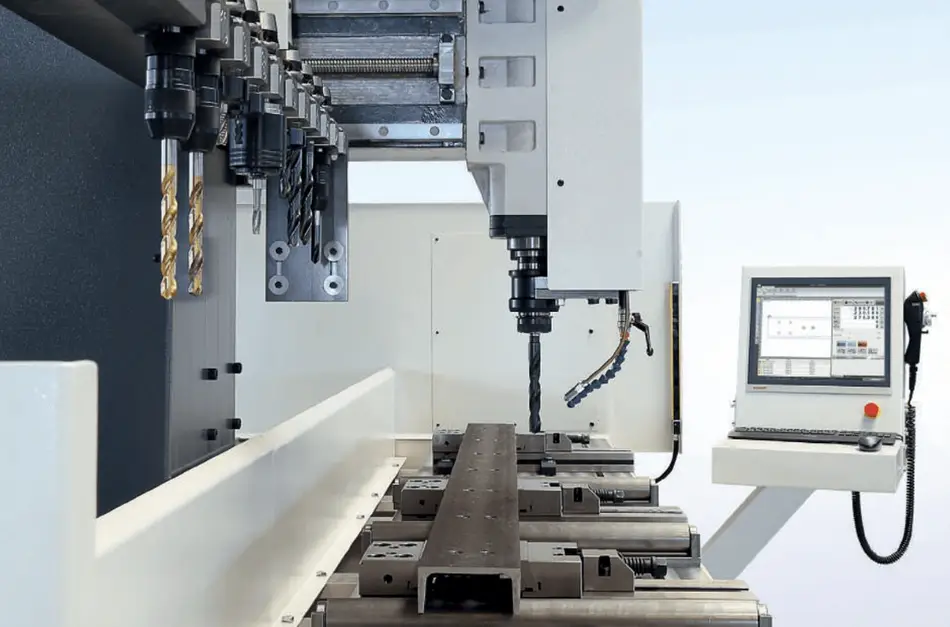
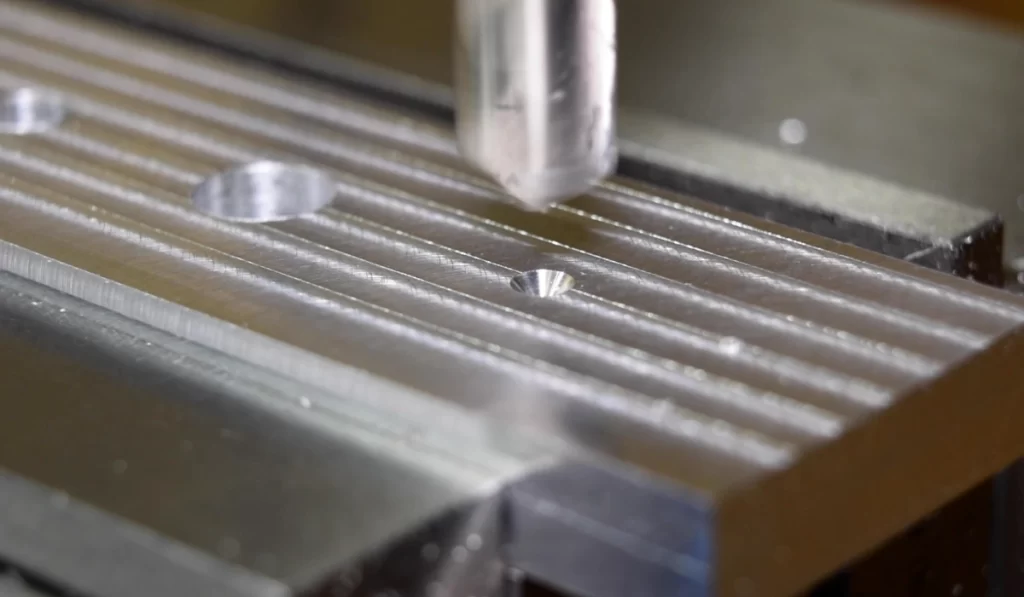



0 Comments